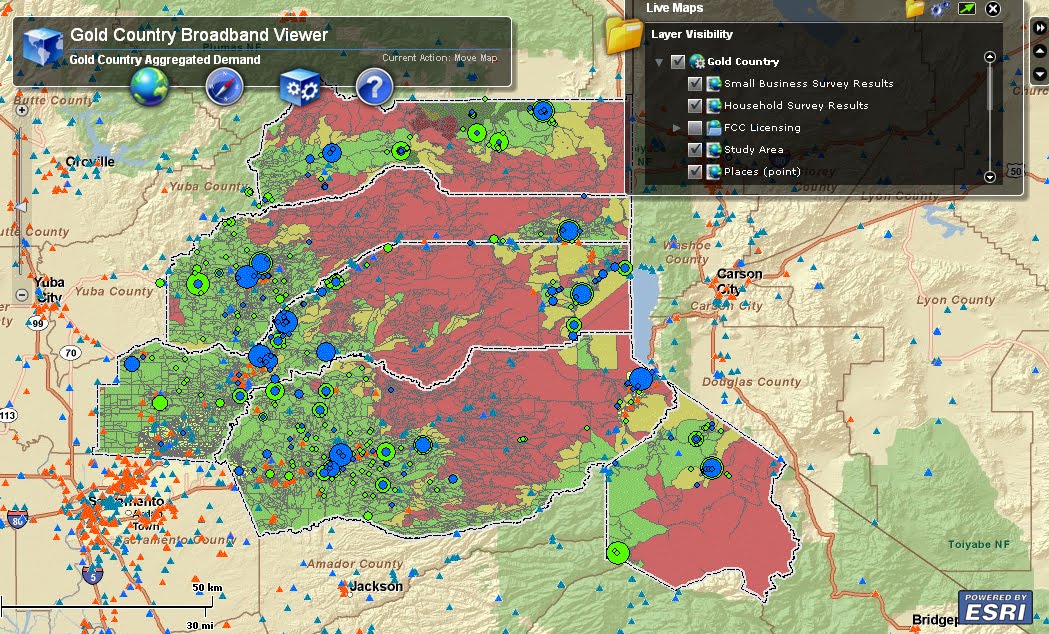The California Emerging Technology Fund (CETF) has funded several regional broadband consortia in northern and central California. At its third annual Rural Connections workshop in Redding this week, representatives from six groups presented the results of their work over the past couple of years. Two, covering California’s Gold Country and Redwood Coast, stood out as having made genuine progress toward bringing Silicon Valley-grade Internet service to areas that are otherwise off the broadband map.

Gold Country Connect provides prospective investors
with broadband planning toolsBrent Smith, CEO of Sierra Economic Development Corporation, and Connie Stewart from Humboldt State University had success stories to tell. Three key lessons stood out:
1. Seek out motivated investors, including competitive local exchange carriers and independent Internet service providers, and find ways to improve their business cases and nudge them towards your goals. Don’t waste everyone’s time trying to bribe or bully them into accepting your plans or implementing your programs. A patchwork of operating networks beats a pristine concept with no takers, every time.
2. Do your homework and make sure it’s A-grade. Simple, quantitative market research that identifies market gaps and charts statistically valid demand at defined price points is pure gold to private sector investments analysts. A centralized broadband mapping project with service provider buy-in, like that run by Chico State University, puts the cards face up on the table and lets everyone get down to business without posturing and poor mouthing.
3. Subsidies help, but don’t necessarily need to be large. A guaranteed loan, a little local capital, even a tax break can tip the balance for a potential private sector broadband investor. When bigger subsidies are needed, the lion’s share of the risk can still fall on private investors. The California Advanced Services Fund will do a 40% match against private capital in underserved areas, and that’s been enough for hundreds of kilometers of fiber.
Unified community support is important, and creates a level of comfort that the project can be implemented. Leadership is needed to gain rights of way, permits and variances, and overcome bureaucratic inertia. Business analysts are more impressed by political muscle and professional, statistically valid research than they are by crayon drawings from a third grade class.
Real progress in other CETF-sponsored consortia has been hampered by a focus on community feel-good exercises and unworldly research. Evidently, Chico State’s mapping expertise is not matched by its economics department: someone there seems to think you can do a demand aggregation study without asking tiresome questions about price elasticity. The good thing about this kind of conference is that public sector decision makers get to see what works and what doesn’t, and can respond appropriately.
The last item on the conference agenda was the decision to come back for a fourth year. Expect to see a longer list of success stories.
